Nothing about the Honda Pilot really stands out. But it only took one family roadtrip to realize that’s not a bad thing. In fact, it’s bewilderingly brilliant. Let me explain…

Do you know what level of precision it takes for the Honda Pilot to not stand out so well?
What I mean is – the Honda Pilot seamlessly blends into your life. And that’s not by accident. Rather, it’s a perfect understanding of the Pilot’s assignment. And it’s another perfect execution by Honda (see Ridgeline & Type-R reviews).
For example, the seats in the Honda Pilot don’t ‘stand out’, because they have a way of disappearing beneath you. There’s no discomfort, no fidgeting – you don’t think about them. You’re not conscious of the steering & the overall suspension/chassis behavior either… in the same way that you’re not conscious of your last 100 heartbeats. The tech is up-to-date, but it’s sensibly (not stupidly) implemented… leaving no thought for frustrations, gripes, or flaws. In a way, you could say the genius behind the Honda Pilot is: There’s actually nothing exceptional about it. And that in-&-of itself… is exceptional. It’s the Goldilocks effect – everything is just right. So right that you fall asleep – lol kidding.
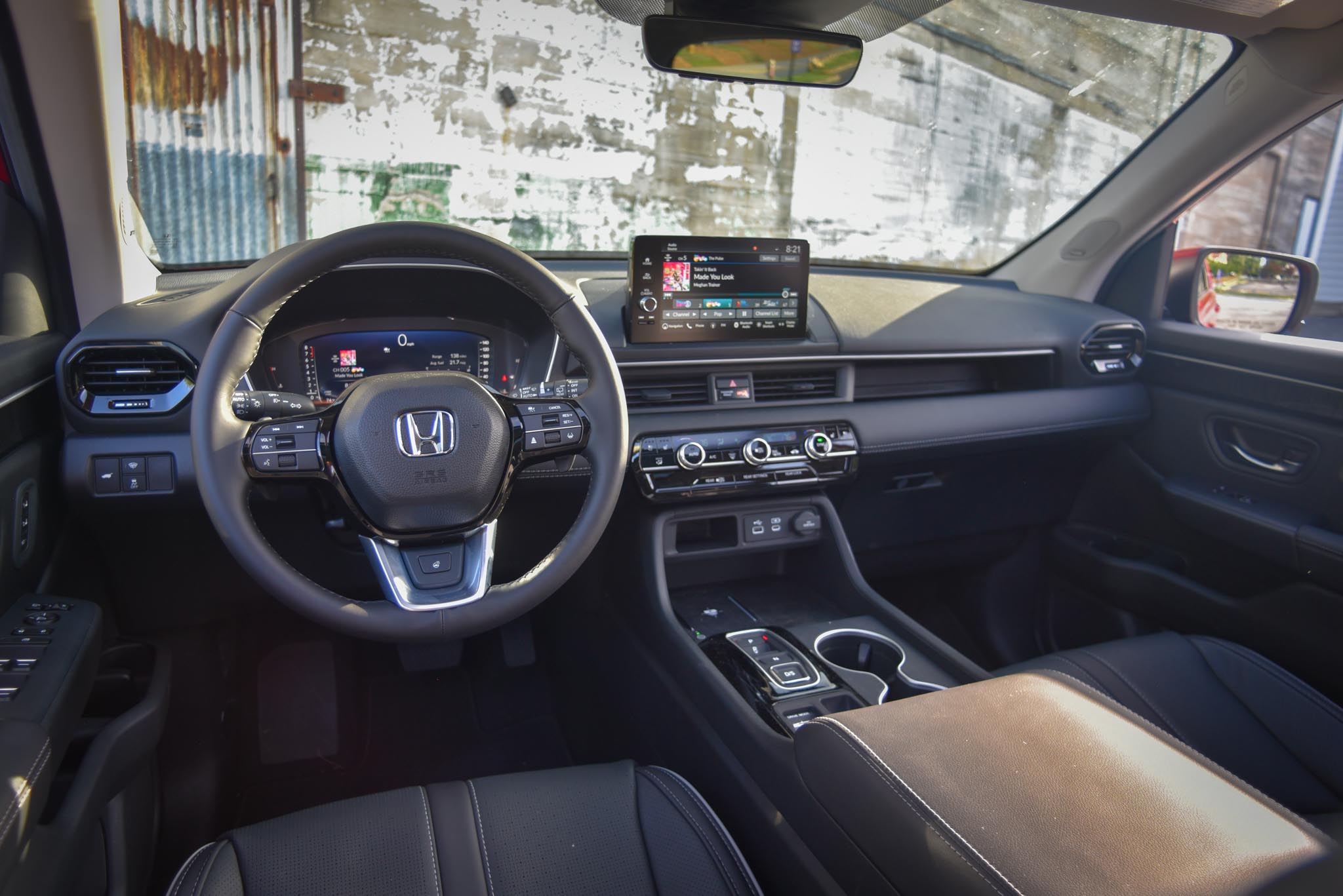
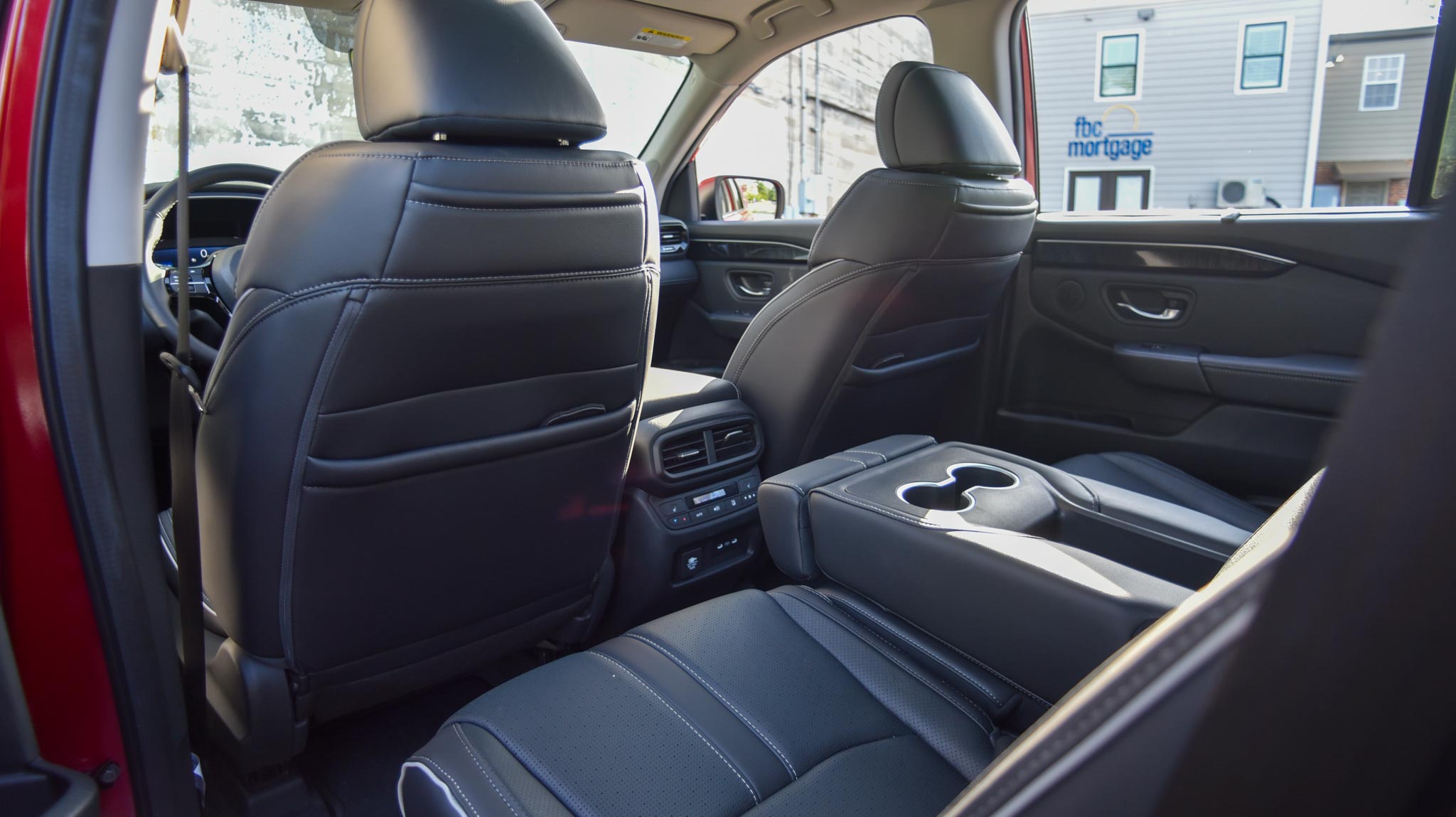
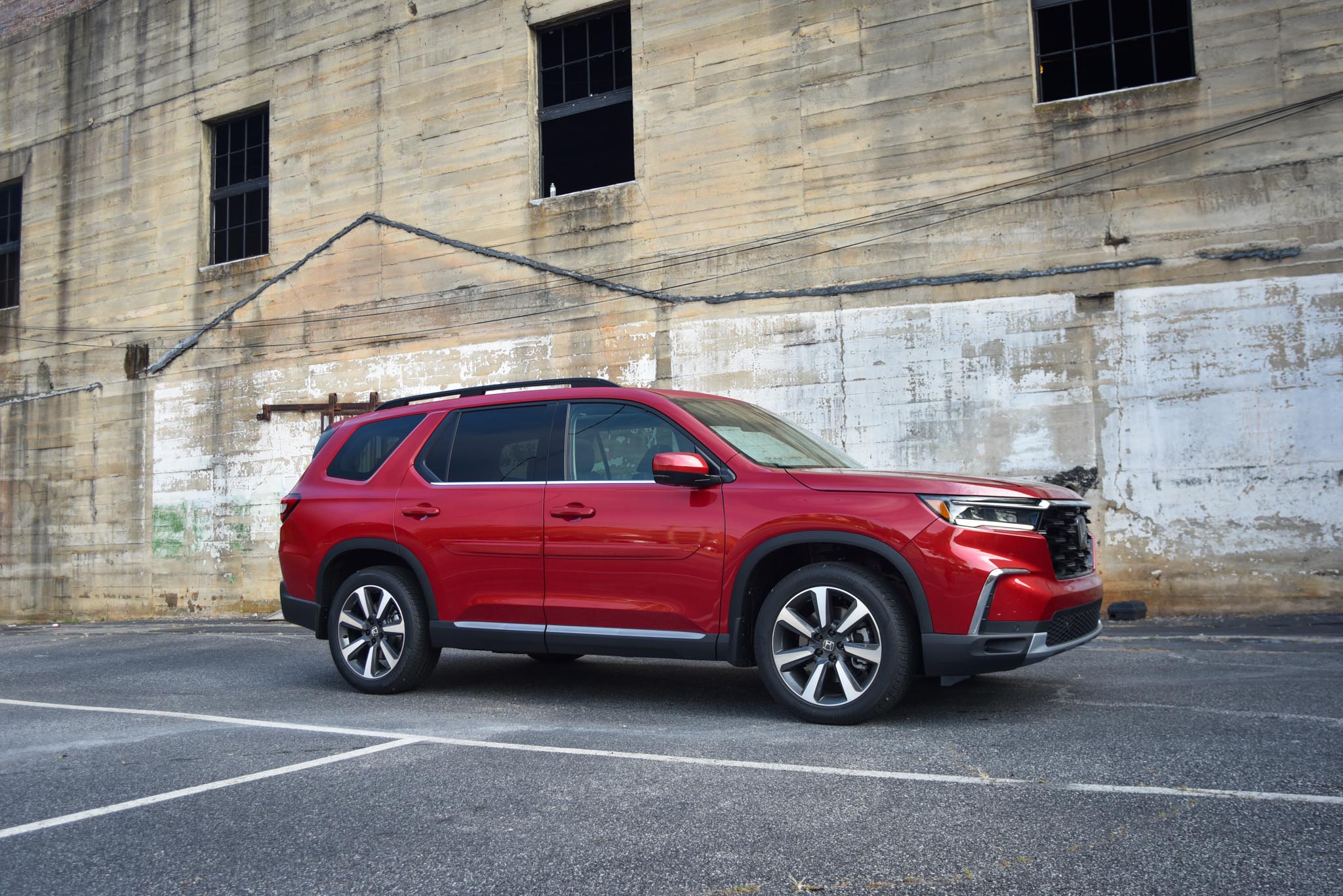

Design-wise, the new Honda Pilot is on point…
Much more than the last model. Sure, beauty is in the eye of the beholder. But I’ll go so far as to say, the last model (16-22) was a slump. It was a hard pill to swallow, which is ironic because it looks a lot like a literal… hard pill to swallow. It’s shapeless & bloated… like if you poked it frosting would come out. We drove the last generation Honda Pilot across the country 6 times (as a support vehicle for our Type-R). And while it was good from a comfort & functionality standpoint, it somehow felt less cool than a minivan. With the new model Honda Pilot, you get a more chiseled/pronounced design with more attractive performance packages. But if there’s one point that I really want to drive home, it’s that…
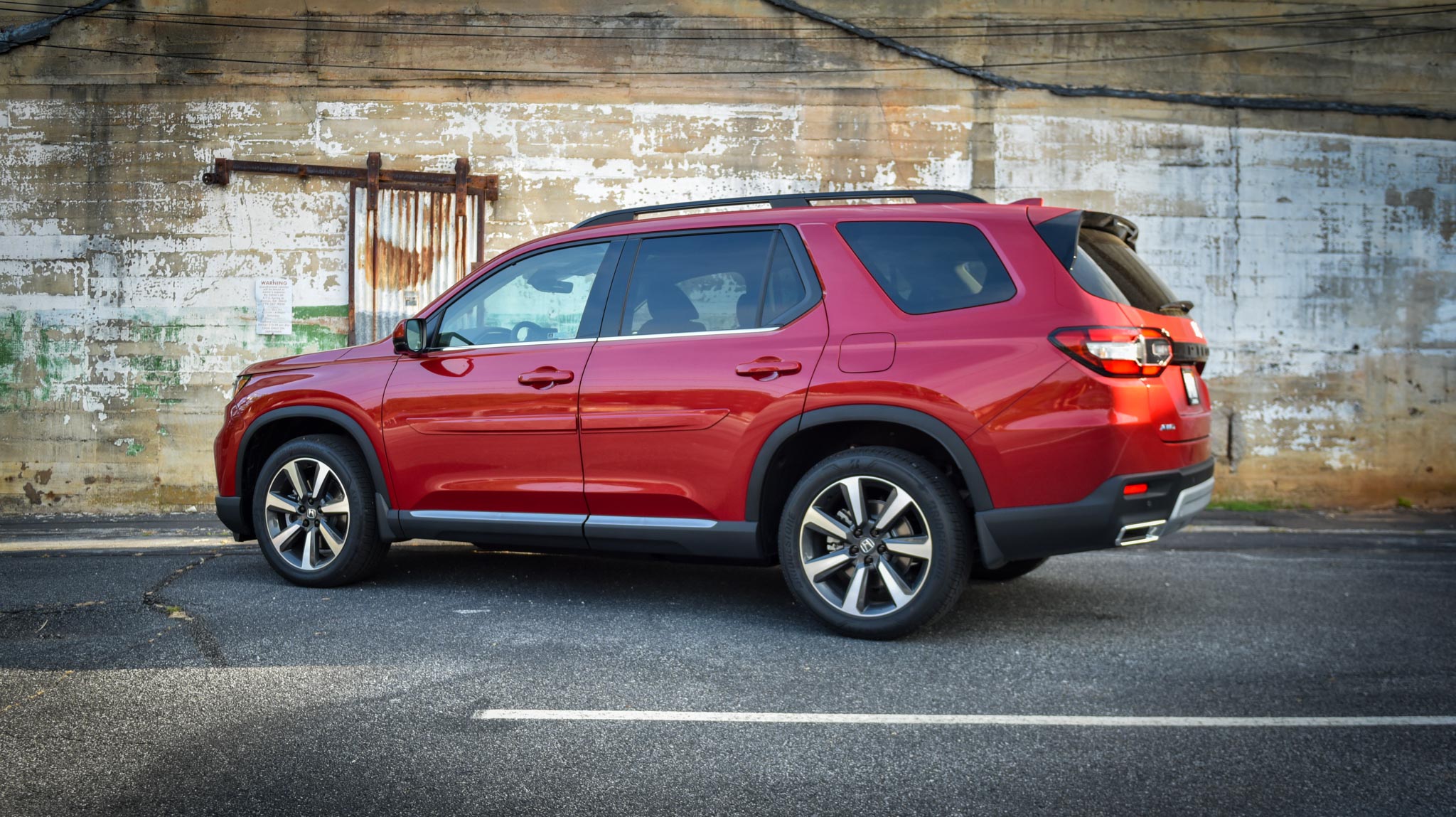
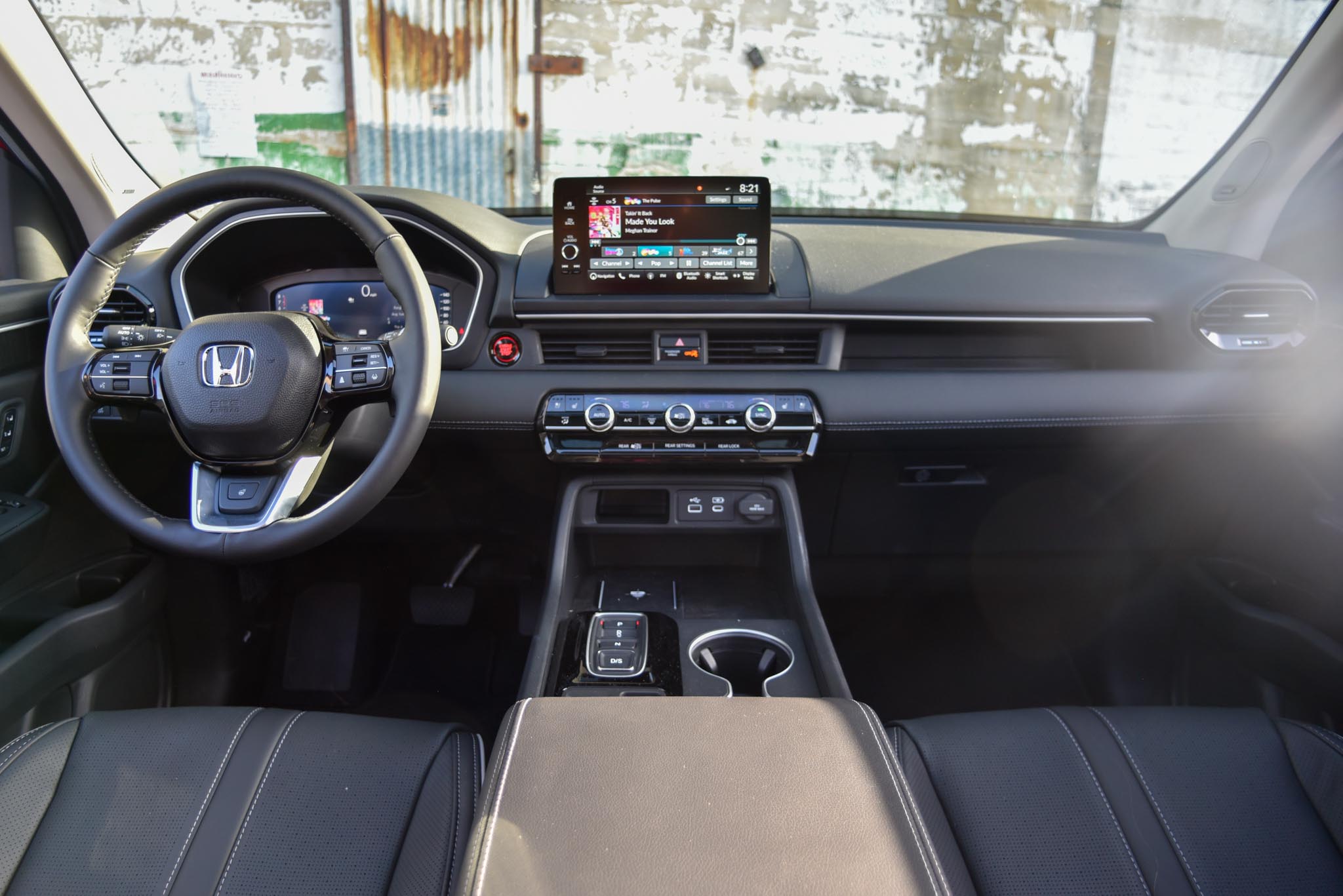
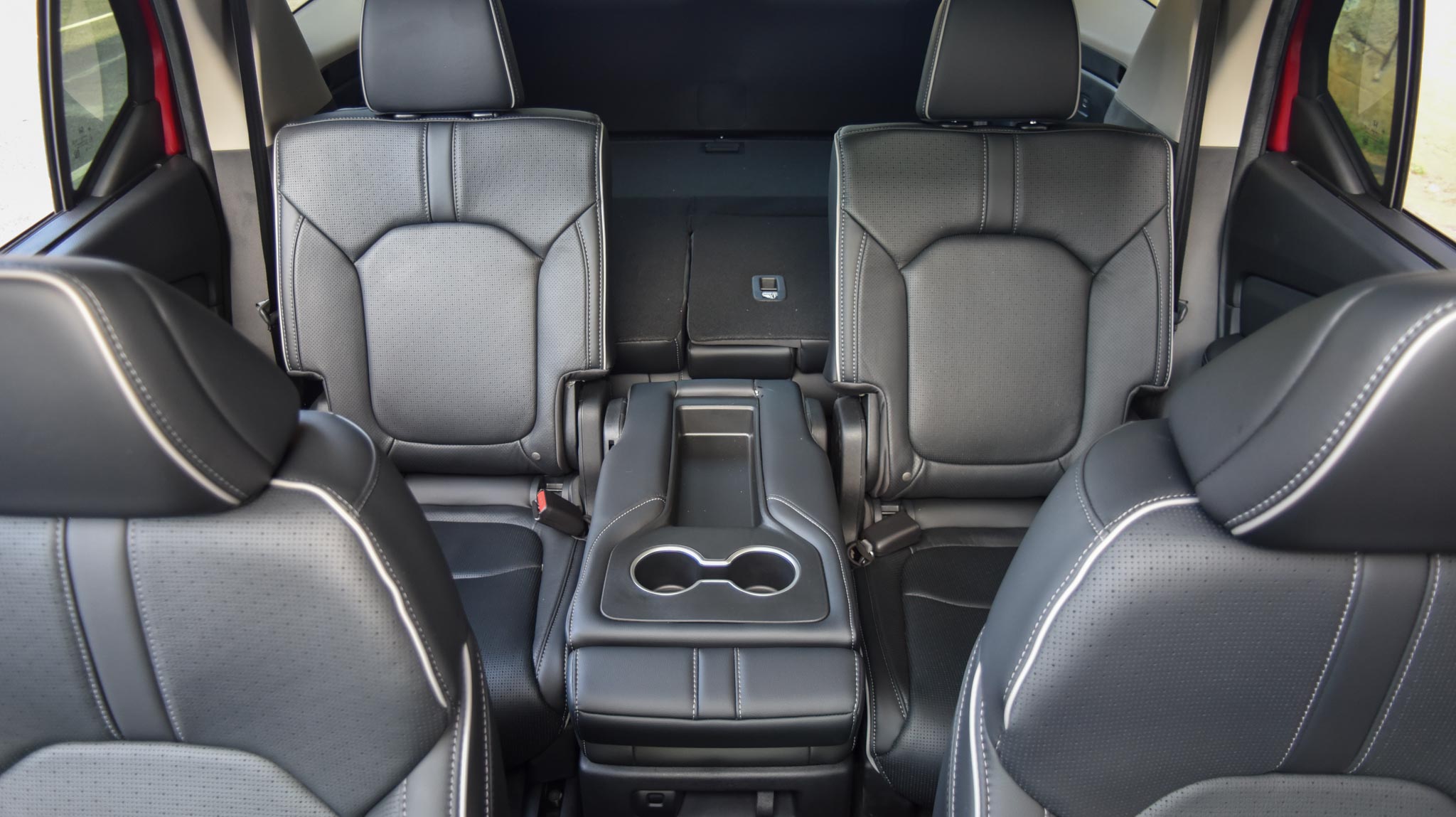
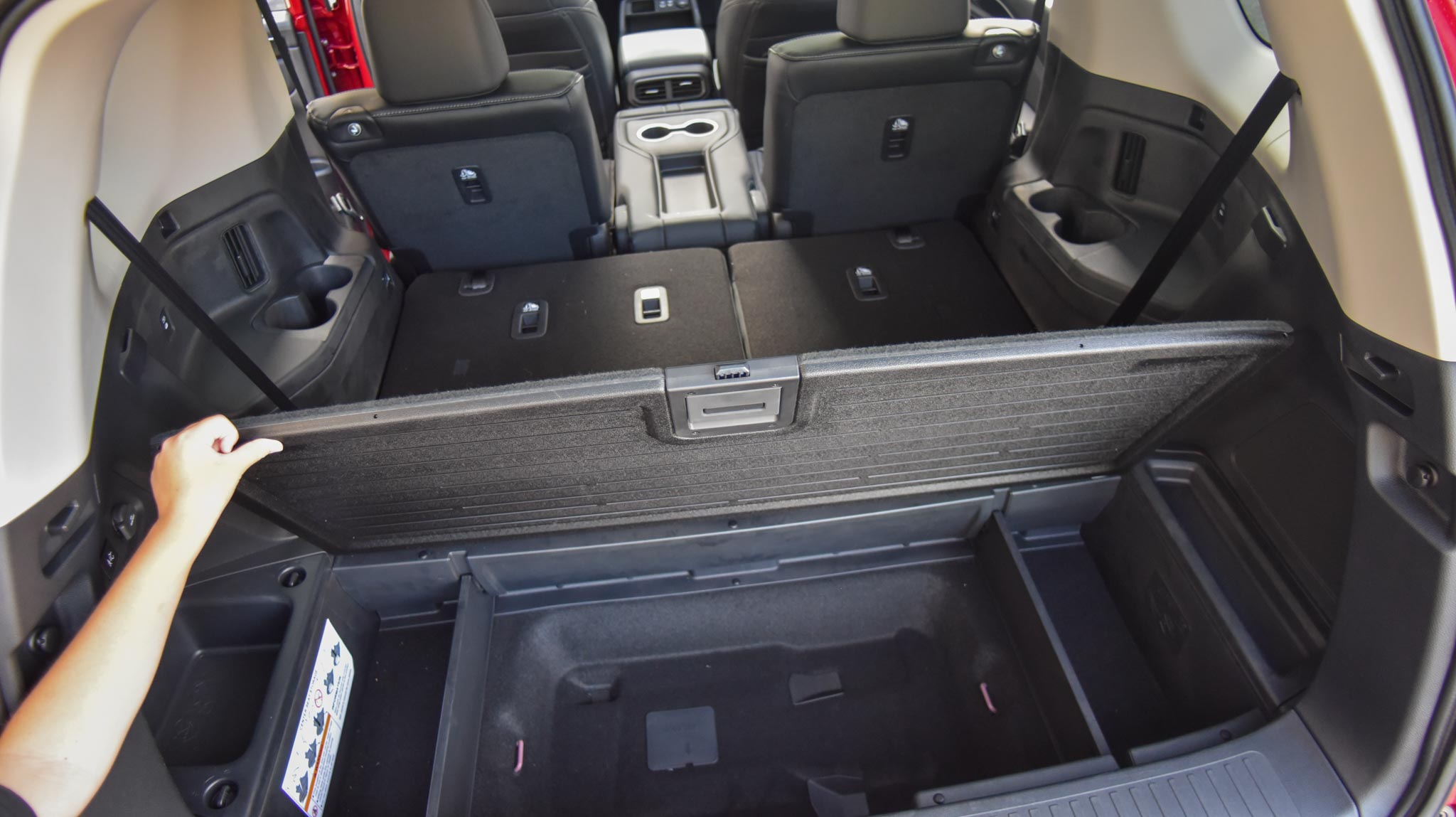
Plenty of room for a carry-on sized suitcase here
The Honda Pilot is livable…
It’s an SUV with comfort, versatility, & utility – so long as you don’t need a big towing capacity. With a 3rd-row and consistent mid-20s MPGs, it’s also efficient. And unlike a Tahoe/Yukon/Expedition, etc, you don’t necessarily feel like you’re wearing a heavy backpack all the time either. The Honda Pilot takes the edge off. With all-wheel-drive, it’s capable enough to handle the weather, limited-traction situations, & within reason trails. But overall – it’s built to go the distance, built for efficiency, and built to last. There is value in the Honda Pilot – longterm value. It’s a solid choice in a sea of bad ones. Let’s talk about that…
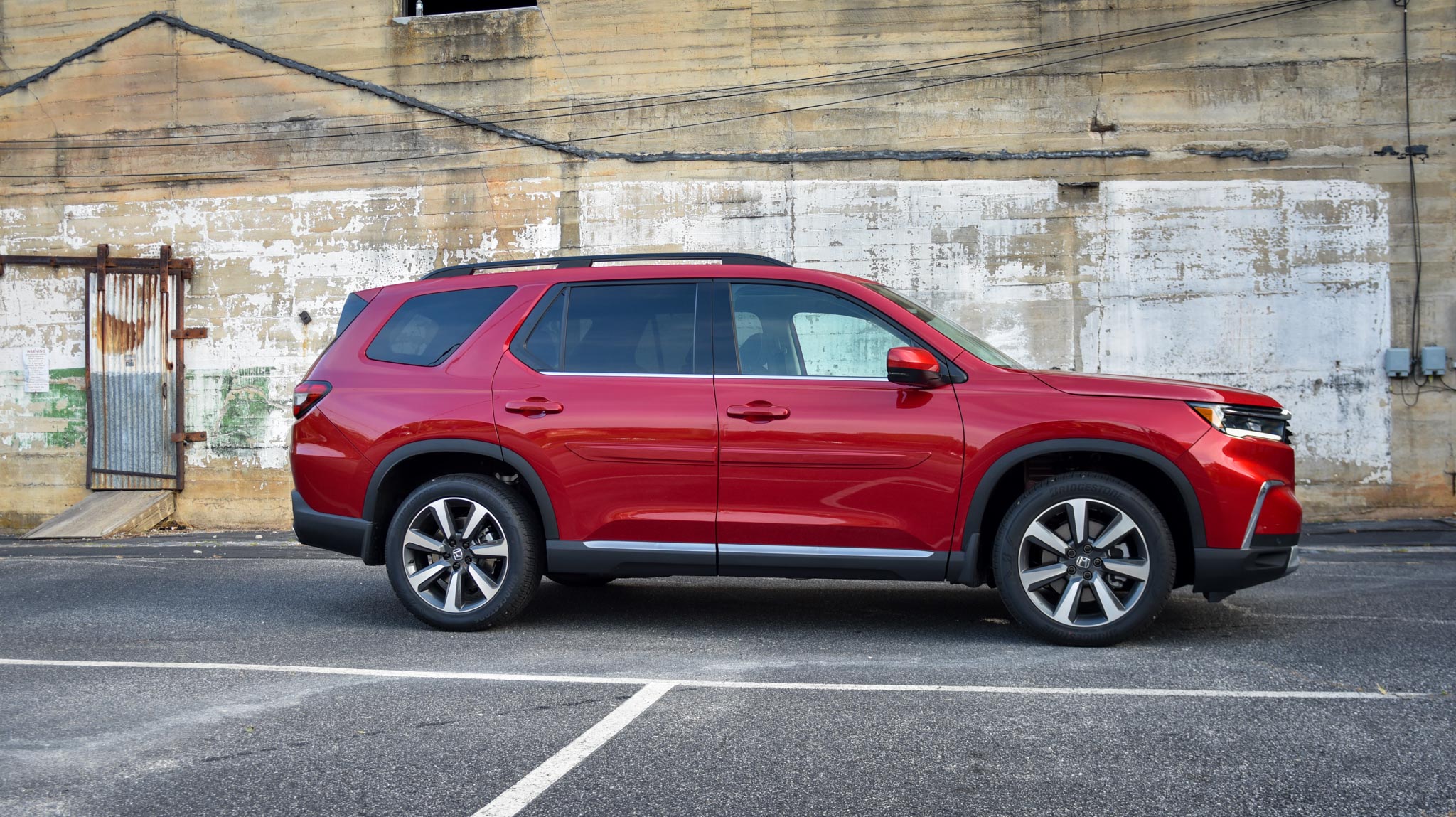
The Honda Pilot primarily appeals to…
Buyers who are not so quickly lured into all the bedazzlings of the current automotive industry. If you’re in the market for a dependable new vehicle, it’s important to know that there are 2 things causing the automotive industry to change more in the last few years… than it has in the last 40. And not necessarily for the better. Especially if you’re a consumer that values quality & longevity.
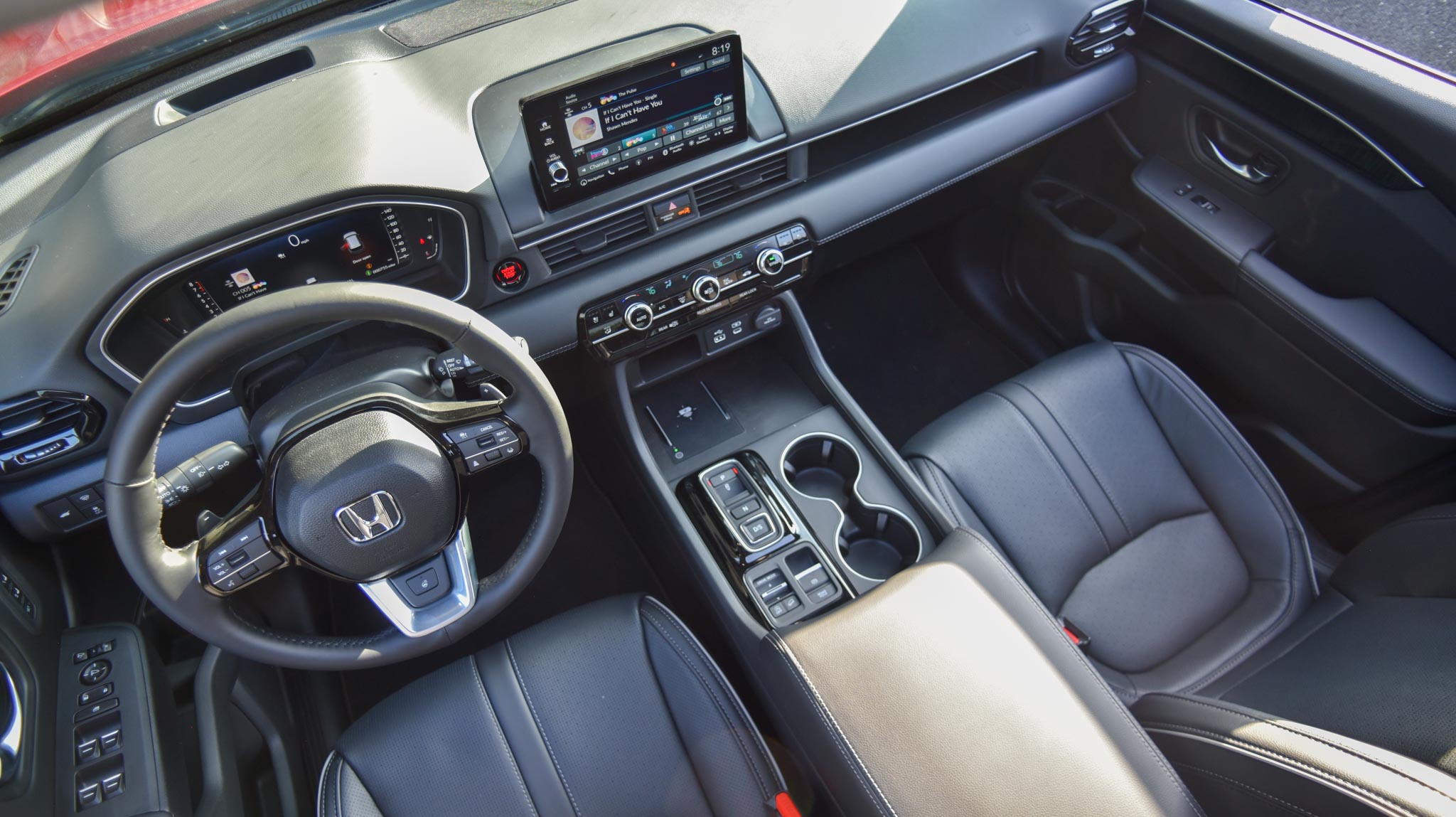

1) Tech…
The automotive industry has become over-intoxicated with tech. For Wall Street driven car-makers, more tech gives them more profit margins & more control/leverage after the sale. In other words, it creates a more dependency & vulnerability for customers. And thus, the automotive industry is in a rapid (some would say rushed/forced) transition to go from mechanical… to electronic. I don’t wanna stray too far off topic, but vehicles don’t need to be electronic devices. Not just yet. And if you’ve ever bricked a phone on some mandatory software update, you know why.
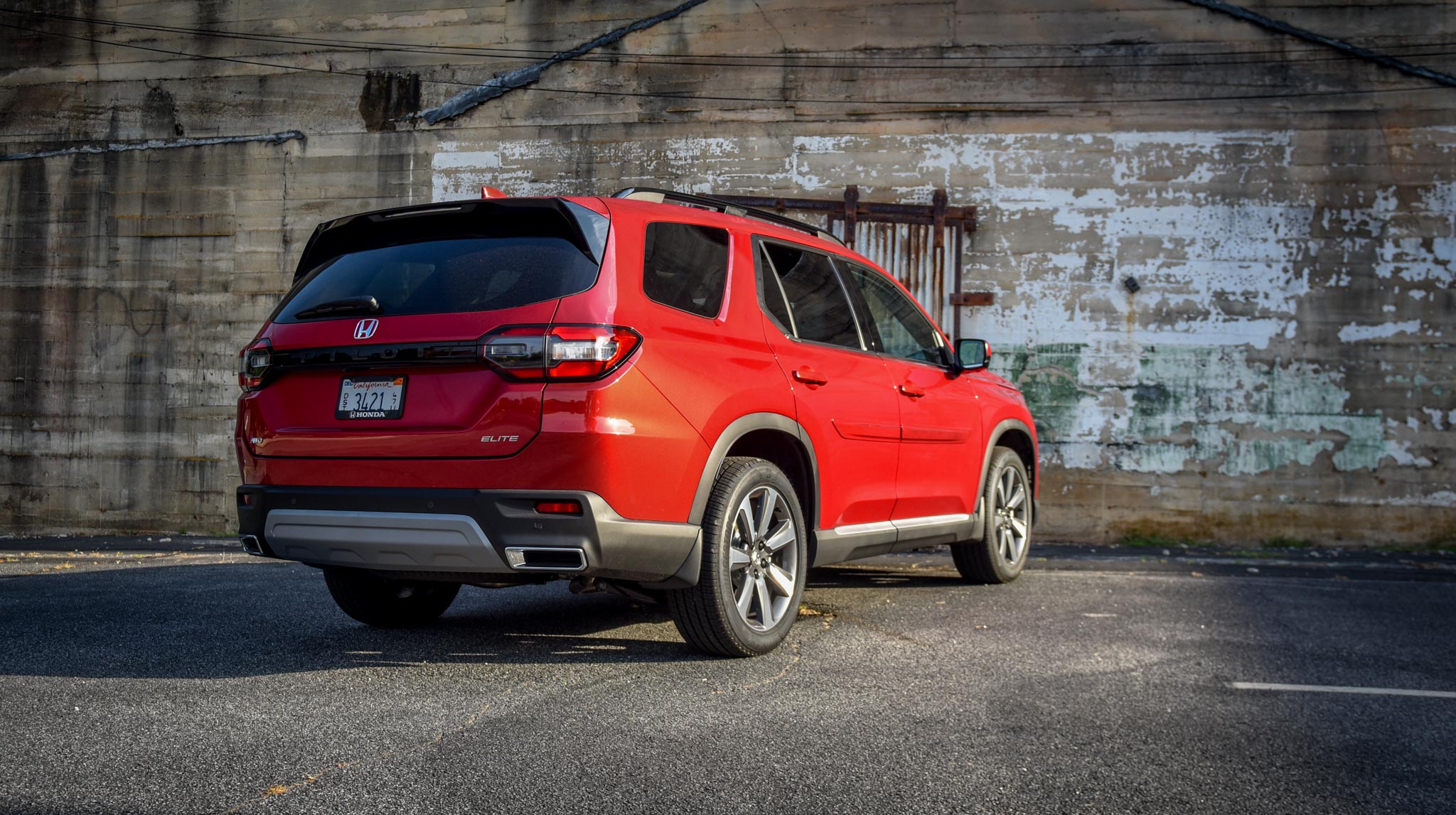
2) Regulation…
The automotive industry is being regulated more than ever before. And while the industry is transitioning to EVs, hybrids, and smaller engines with forced induction (turbos)… the 2024 Honda Pilot retains a tried-&-true 3.5 V6 with no turbocharger and no hybrid.
Look, turbos are amazing… on vehicles that are built to thrill. But on the family SUV, it’s a little more iffy. In today’s automotive industry, turbochargers are being used to supplement engine displacement (aka engine size) so that vehicles can meet more-&-more stringent emissions regulations. But a common side-effect is: A smaller engine that’s working harder to move a bigger vehicle. Turbos also add heat, and heat ultimately kills engines. Not to mention, they add complications, potential fail-points, and potentially expensive repairs down the road.
And hybrids are good for better gas mileage. But no matter how you slice it, with a hybrid, you’re using 2 motors and a battery… to do what 1 motor can do. You’re usually paying more upfront for a hybrid. And the MPGs you gain today is likely just a deferred cost to more costly/complicated repairs later. The point is…
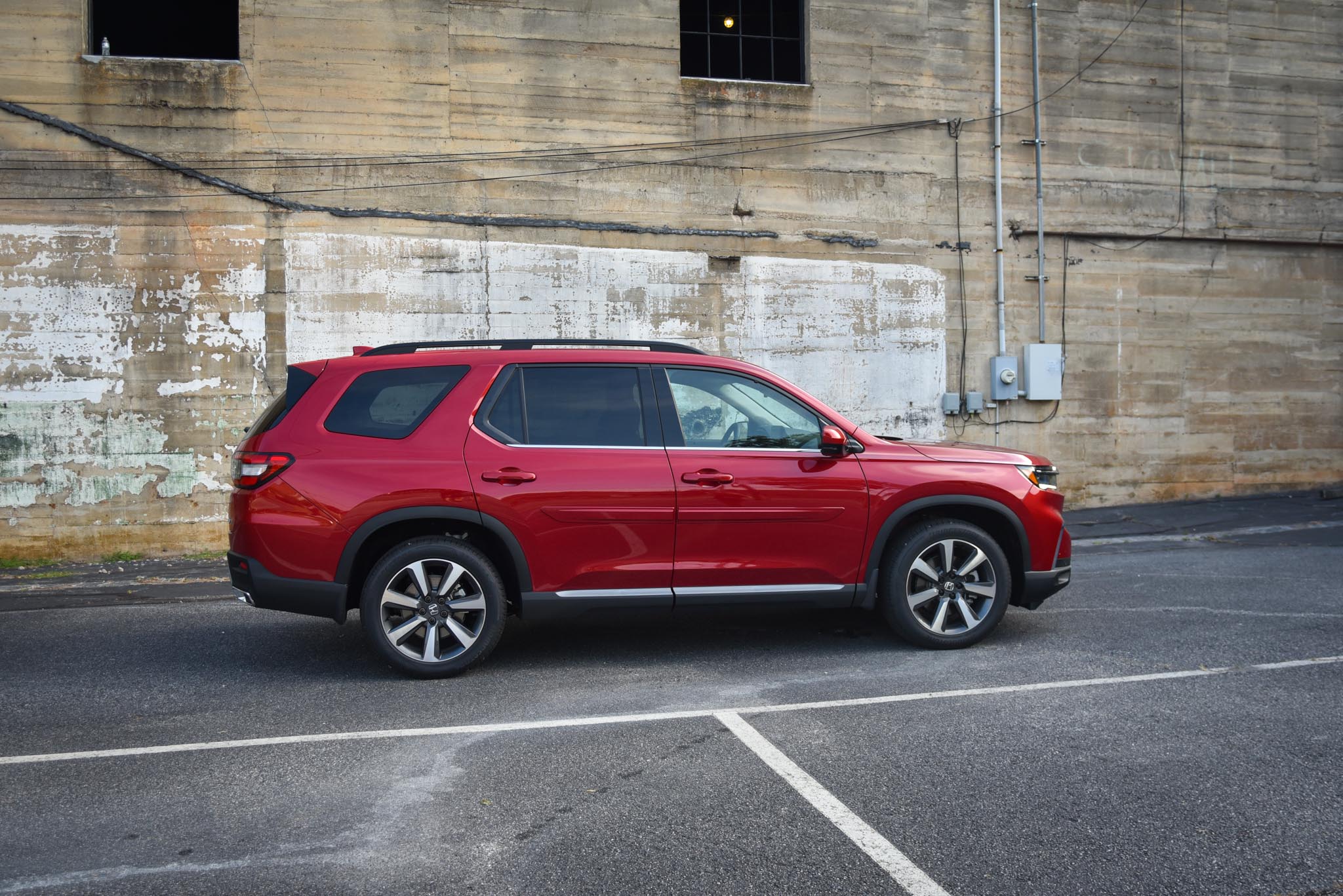
With a tried & true 3.5-liter V6 engine (no turbo; no hybrid)…
The Honda Pilot is built to last. And just as importantly, it’s built to be serviceable & cost-effective for the long haul. In other words, it’s a new vehicle built to the old moral standards of the automotive industry. And it’s so dialed-in, there’s almost nothing else to talk about lol.
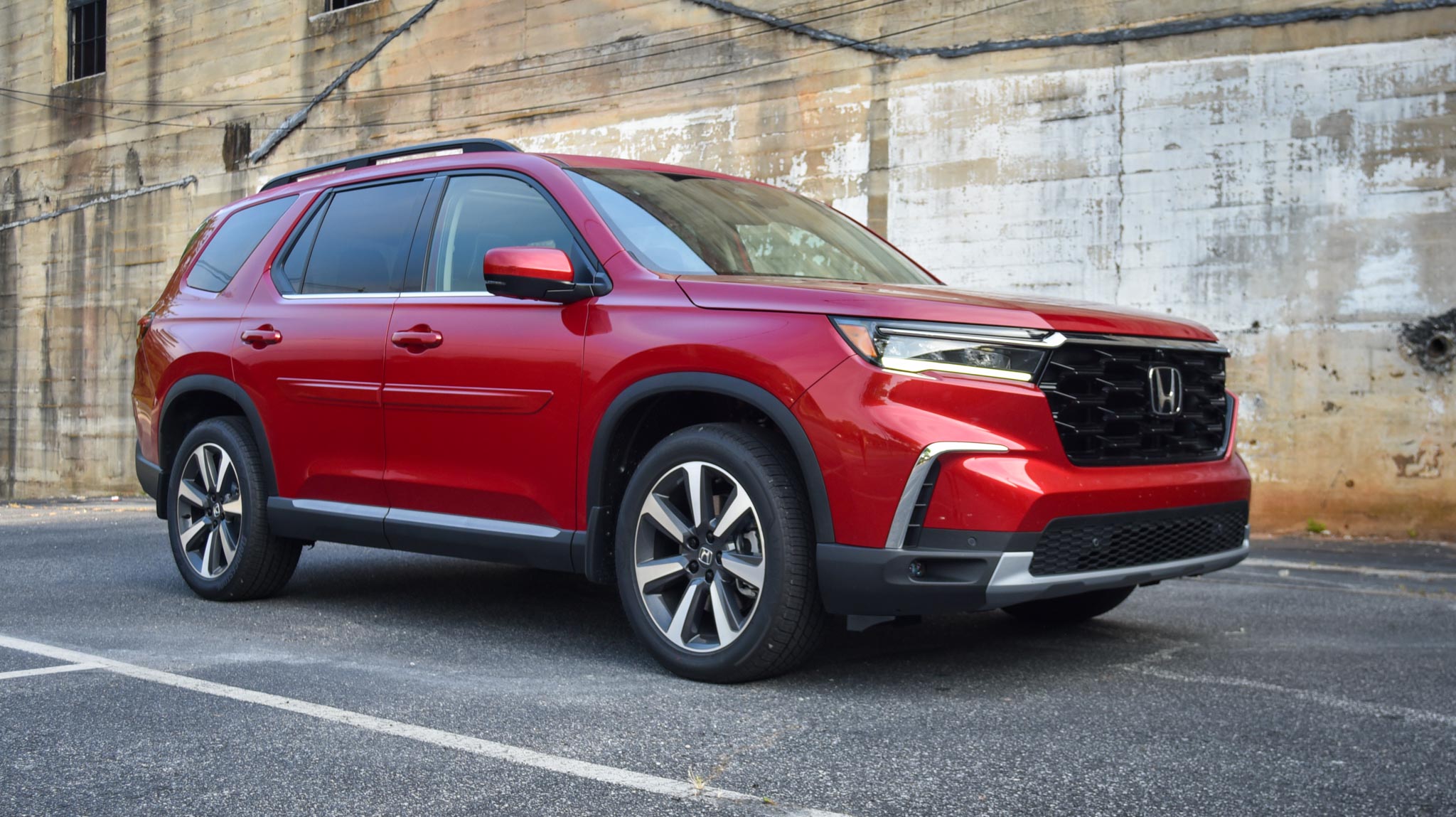







kamagra oral jelly: achat kamagra – Kamagra Oral Jelly pas cher